1. Organosulfur compounds, in Garlic
- Make your own quick garlic toast using sprouted bread, raw minced garlic, chopped parsley, olive oil, and avocado if desired.
- Add raw minced garlic to hot bone broth when feeling run-down.
- Lightly sauté garlic with organic tomatoes (early girl tomatoes, when in season, are amazing) in olive oil. Keep the heat low to medium to maintain integrity and nutrition of the oil.
Please note that certain immune-stimulating foods, like garlic, may be detrimental to those with autoimmune disease (e.g. lupus).
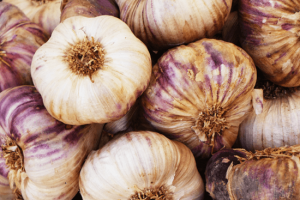
2. Isothiocyanates, from chewing Cruciferous Vegetables
Bless those Brussels Sprouts! Cruciferous Vegetables also include cabbage, broccoli, cauliflower, kale, turnips, collard greens, bok choy, black and brown mustard seed, and more. When we eat these specific vegetables, bioactive compounds called isothiocyanates are released, bringing many benefits.
Benefits: In numerous mice studies, isothiocyanates were identified to reduce and prevent both tumors and cancer. These anti-cancer and anti-tumor benefits go above and beyond benefits from our ‘normal’ fruits and vegetables. Other studies have reported cardiovascular and heart disease protection, genetic protection, positive longevity enhancement, and brain benefits to boot. (Many studies specifically point to sulforaphane, a powerhouse isothiocyanate.)
Nutrient Nuance: Isothiocyanates (especially sulforaphane) are released when these vegetables are raw and chewed well. If the vegetable has been heated, then myrosinase, a necessary enzyme, must be added to produce sulforaphane. We can easily add myrosinase by sprinkling fresh ground mustard seed on any heated cruciferous vegetable(s).
One study suggests that sulforaphane is maximized in broccoli florets by heating to 134.6 degrees F for 10 minutes. Another suggested steaming for 3-4 minutes instead for a similar effect with less effort. (And always add ground mustard seed!)
- Lightly steam broccoli and cauliflower up to 3-4 minutes. Or blanch with water temp just under 135 F. Always sprinkle with ground mustard seed to obtain the benefits!
- Make a massaged raw kale salad. Rub a combination of minced garlic, olive oil, and lemon juice into clean and dry kale leaves (stalks removed). Top with raw onion, walnuts, avocado and more as desired.
- Make collard greens with garlic and onion, topped with ground mustard seed for a super-immune-boosting and delicious side. See full recipe here.
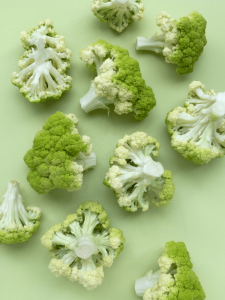
Back to Top Menu
3. Carotenoids, from vibrant-colored vegetables and fruit.
Benefits: Immune-boosting, anti-inflammatory, and anti-cancer. Promotes brain and nervous system development in babies through mother’s milk. Other studies have reported cardiovascular and heart disease protection. BONUS: Many whole foods rich in carotenoids are also rich in Vitamin C. e.g. Red bell peppers, guava, kale, etc,
Nutrient Nuance: Carotenoids are best absorbed when eaten with a small amount of fat. Chopping and cooking also tend to increase the bioavailability of carotenoids.
- Eat raw red bell pepper with hummus, including fat (from tahini, olive oil).
- Lightly steam spinach and top with garlic and 1 TBSP olive oil.
- Lightly sauté mustard greens in refined coconut oil or avocado oil (heat-resistant oils)
- Massage clean and dry kale pieces with olive oil. Sprinkle turmeric and nutritional yeast liberally, then add a touch of Himalayan sea salt. Bake at 225 for 10 minutes or until desired crispness. Sprinkle with ground mustard seed.
- Make collard greens with garlic and onion, topped with ground mustard seed for a super-immune-boosting and delicious side. See full recipe here.
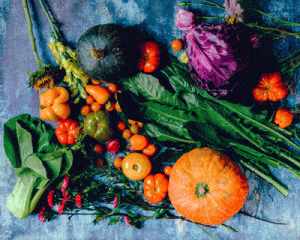
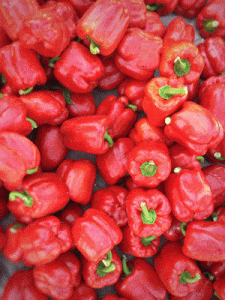
Back to Top Menu
4. Immune-boosting Minerals: Zinc + Selenium
- Make the kale chips recipe topped with liberal amounts of nutritional yeast, which includes both selenium and zinc, plus bonus B Vitamins.
- Enjoy organic oatmeal topped with a handful of pecans and wheat germ.
- Cook wild salmon with minced ginger root and garlic. Serve with sautéed spinach or asparagus spears.
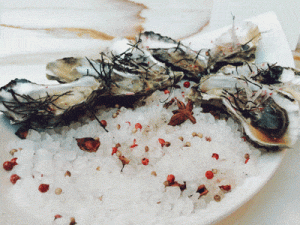
Back to Top Menu
5. Inflammation taming Turmeric
- When grilling or cooking meats on high heat, season every 3.5oz (small palm portion) of meat with 1-2 teaspoons of turmeric to reduce toxins from cooking.
- Make quick and nourishing turmeric tea. Steep fresh grated or minced turmeric in boiled water for at least 5 minutes. Option: add fresh ginger root for the steeping. Add a touch of lemon and/or honey per preference.
- Make the kale chips recipe but replace the listed curry powder with liberal amounts of turmeric instead.

Back to Top Menu
6. Healthy Fats
While fat has had a bad rap in years past, science has shown that fat in the correct form and amount is beneficial. Fat helps build and protect our brains and our cells, and it can even protect against inflammation. In fact, approximately 60% of our brain consists of fat!
Without sufficient healthy fat, we harm our cells, brain, immune system, and even heart.
Fats are responsible for transporting key fat-soluble vitamins: Vitamins A, D, E, and K. With healthy fat, we better absorb these key nutrients known for supporting our immune system and overall health.
Nutrient nuances:

Back to Top Menu
7. Flavonoids
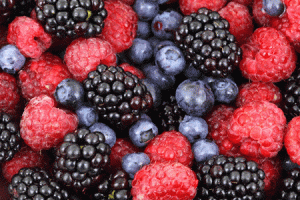
Back to Top Menu
8. Immune-strengthening Vitamins: A, C, E, D, B6
We cover the key immune-boosting Vitamins (A, C, E, D, and B6) our bodies need to bolster defenses to live healthy anywhere, especially on the road. All of Vitamins A, C, E, and B6 act as powerful antioxidants to scavenge free-radicals and negate their otherwise harmful effects. As always, we recommend maximizing nutrients first from whole foods before looking to supplements.
Vitamin A is found either in animal foods such as fish oils and liver, or converted in our bodies from beta-carotene (see carotenoids above!)
Vitamin C is crucial for collagen production in our bodies. This makes C important for wound-healing, in addition to immune support.
- Protect against chronic diseases, autoimmune diseases, and infection.13
- Stimulate and support key immune system function and modulation. Aid white blood cell production and function (C, E, B6) and antibody levels and responses11 (C, B6).
- Bolster our defenses against microbes and viruses. Build resistance against infection. (C, D)
- Bolster defense mechanisms of our mucous membranes (eyes, nose, ears, throat, etc) (A)
- Enhance and support healthy skin (A, C, E, D) and fertility. (A, E)
- Improve Vision, especially night vision, by supporting the rods in our eyes. (A)
- Help to lower bad cholesterol (C, B6)
- Protect cells, helps to slow aging and keep our brains sharp. (E)
- Promote energy & Mood (B6)
- Keep a mix of nuts and seeds in your carry-on, including sunflower seeds and walnuts for Vitamins B6 and E, and almonds for extra E.
- Enjoy cooked Wild Salmon or Mackerel for excellent sources of Vitamin D. Look for sardines on the menu as well.
- Leafy greens are king and give you a good dose of not only Vitamin A through beta-carotene conversion, but also Vitamins E and C.
- Snag a salad including cabbage for Vitamins C and B6.
- Spice up a salad or any dish with red chili peppers for additional Vitamins A and C.
- Sardines and canned tuna fish in their own oil are both top sources for Vitamin D; but due to their strong smell, we save these for at home, unless a restaurant has a sardine appetizer.
- Make our Kale chips recipe, including nutritional yeast for B6, plus Vitamins A and E with the Kale and Olive oil.
Back to Top Menu
9. Live culture and Fermented Foods
- Support a healthy balance of intestinal flora by feeding the growth of good bacteria and protecting against intestinal pathogens and disease-causing bad bacteria.20
- Improve gut health and digestion, and enhance the absorbability and availability of vital vitamins, minerals, & other nutrients. For example, enhance circulating vitamin D levels and enhance Omega 3 levels in tissues.21
- Seek whole, organic unflavored (plain) yogurt
- Consume healthy beverages like beet kvas or kefir
- Enjoy miso, tempeh, or natto (we recommend only from Organic or verified non-GMO soybeans)
- Sauerkraut, kimchi
- Kombucha (do check the sugar content)
- Fermented vegetables ( e.g. cabbage, onion, olives, carrots, cucumbers )
- Look for “live cultured foods”
- Enjoy whole, organic plain yogurt topped with berries (fresh or frozen) and chia seed or freshly ground flax seed. This provides a triple threat of healthy probiotics, flavonoids, and healthy Omega 3 fat! Perfect as part of a healthy breakfast or snack.
- All of the ‘on the road’ options above are great to keep on hand in the refrigerator.

Back to Top Menu
Discover the best healthy, sustainable, and delicious food near you.
Healthy Anywhere
Conscious. Clean. Curated.™
REFERENCES
Murray, M, Pizzorno, J. (2012) The Encyclopedia of Natural Medicine.
Sharon, Dr. M. (2017) The Complete Guide to Nutrients. 7th Edition.
Murray, M, Pizzorno, J, Pizzorno, L. (2005) The Encyclopedia of Healing Foods.
https://doi.org/10.1007/s10875-006-9066-7 “Spicing up” the immune system by curcumin.
- Sa G, Das T. Anti cancer effects of curcumin: cycle of life and death. Cell Div. 2008;3:14. Published 2008 Oct 3. doi: 10.1186/1747-1028-3-14
- Tsai KD, Lin JC, Yang SM, et al. Curcumin Protects against UVB-Induced Skin Cancers in SKH-1 Hairless Mouse: Analysis of Early Molecular Markers in Carcinogenesis. Evid Based Complement Alternat Med. 2012;2012:593952. 10.1155/2012/593952


Pingback: Fighting Inflammation on the road - Healthy Anywhere
Pingback: Lessons learned and Healthy Perspective, from our Founder - Healthy Anywhere
Pingback: Oh my, Omega! All you need to know about Omega-3 fatty acids - Healthy Anywhere
Pingback: Dining “wild”, with nutrient density and delight - Healthy Anywhere
Pingback: Keep calm and bolster your immunity - Healthy Anywhere
Pingback: The quickest, easiest at-home healthy we could find - Healthy Anywhere